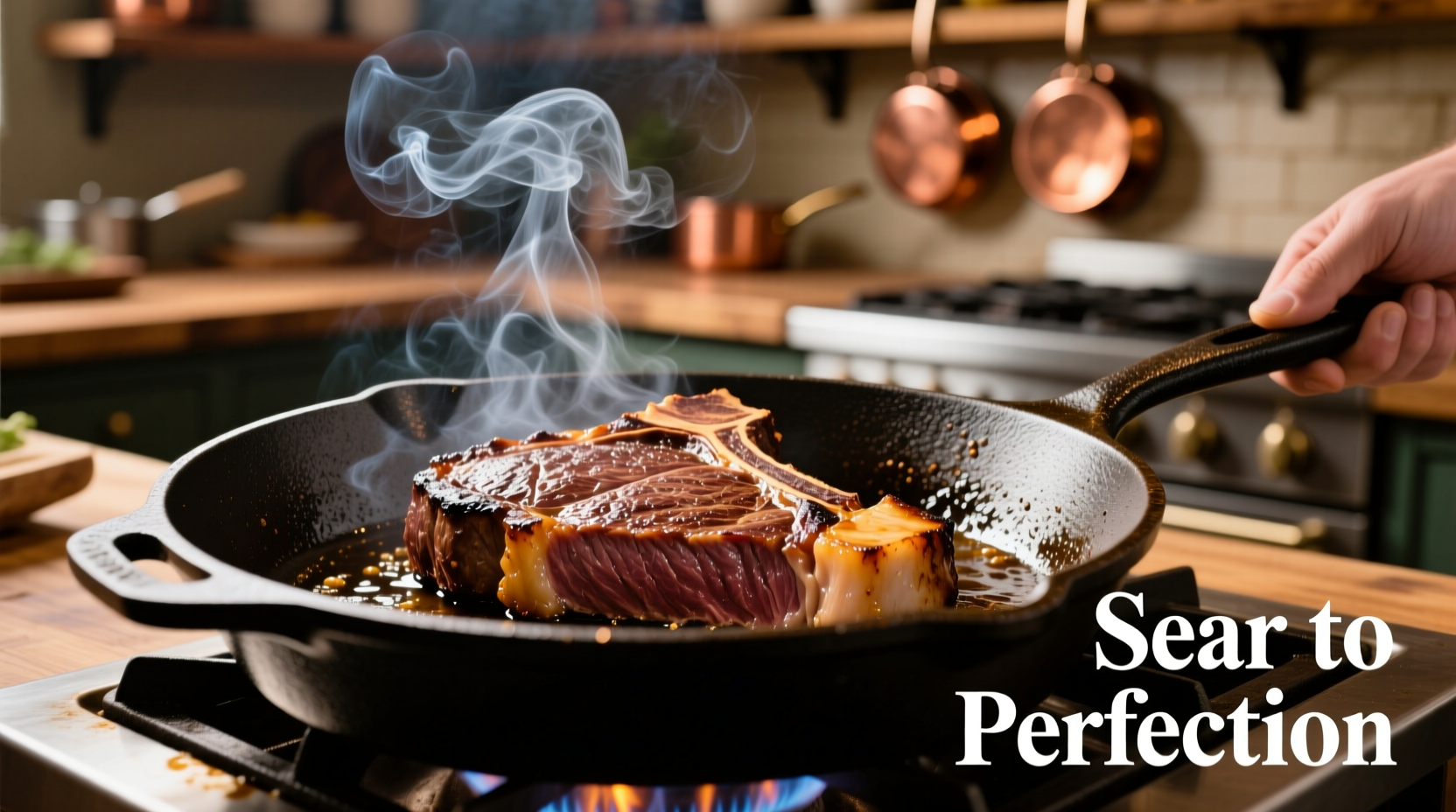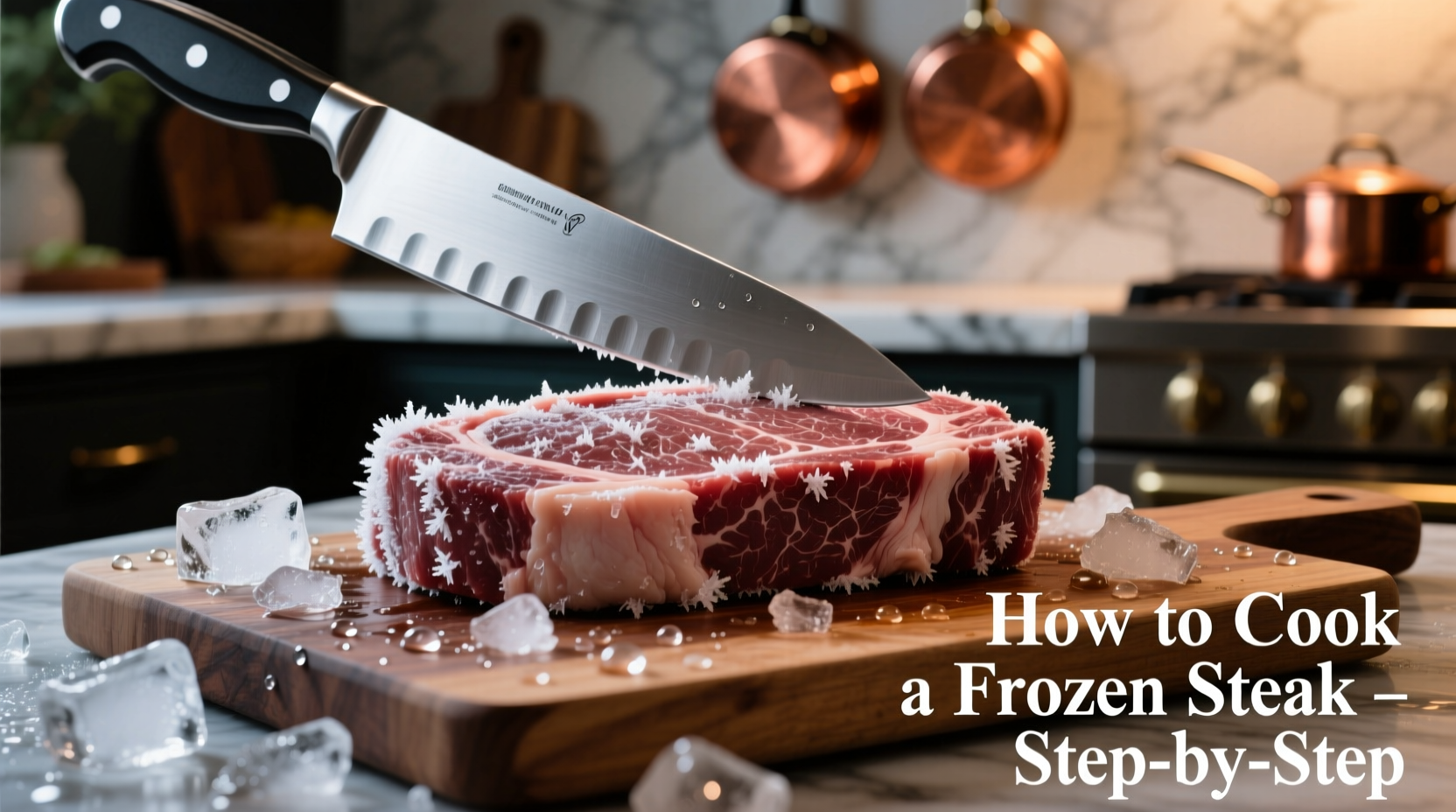Why Cooking Frozen Steak Works (And When It's Best)
Many home cooks believe you must always thaw steak before cooking, but this isn't true. In fact, cooking steak directly from frozen can produce superior results when done correctly. According to a USDA Food Safety and Inspection Service study, properly cooked frozen steak reaches safe internal temperatures (145°F for medium-rare) without compromising food safety.
Cooking frozen steak works best when:
- You're short on time and forgot to thaw your steak
- You want to minimize handling raw meat (reducing cross-contamination risks)
- You're cooking a standard thickness cut (1-1.5 inches)
The Science Behind Frozen Steak Cooking
When you cook frozen steak using traditional methods, you often get a gray band of overcooked meat between the seared exterior and the rare interior. This happens because the frozen center takes too long to thaw while the outside overcooks.
The solution is the reverse sear method adapted for frozen steak. Food scientist Dr. Greg Blonder explains in American Journal of Physics that starting with low heat allows the entire steak to reach proper temperature gradually before developing the Maillard reaction crust.
| Cooking Method | Thawed Steak Time | Frozen Steak Time | Temperature Difference |
|---|---|---|---|
| Pan Searing | 8-10 minutes | 14-18 minutes | 6-8 minutes longer |
| Reverse Sear | 45-60 minutes | 60-75 minutes | 15-20 minutes longer |
| Grill Direct | 10-12 minutes | 18-22 minutes | 8-10 minutes longer |
Step-by-Step: Perfect Frozen Steak Every Time
Method 1: Reverse Sear (Most Reliable)
This method delivers the most consistent results for frozen steak. You'll need an oven, cast iron skillet, and instant-read thermometer.
- Preheat oven to 275°F - Lower temperature than for thawed steak to accommodate frozen center
- Season generously - Pat frozen steak dry with paper towels, then apply salt, pepper, and any desired seasonings
- Rack position - Place steak on wire rack over baking sheet to allow air circulation
- Low-temperature cooking - Cook until internal temperature reaches 10-15°F below desired doneness (about 45-60 minutes for 1-inch steak)
- High-heat sear - Heat cast iron skillet on high until smoking, then sear steak 60-90 seconds per side
- Rest - Let steak rest 5-10 minutes before slicing

Method 2: Pan Searing (Quick Home Method)
For those without oven access, this stovetop method works well with proper technique:
- Dry the surface - Use paper towels to remove surface ice crystals
- Cold pan start - Place frozen steak in cold skillet with 1 tbsp oil
- Low heat cooking - Cook covered on medium-low for 15-20 minutes (flip occasionally)
- Check temperature - When internal temp reaches 110-120°F, increase heat to high
- Sear - Sear 60-90 seconds per side until proper crust forms
- Add flavor boosters - During final sear, add butter, garlic, and herbs to the pan
Critical Mistakes to Avoid
Even experienced cooks make these common errors when preparing frozen steak:
- Starting with high heat - Creates immediate sear but leaves frozen center (results in gray band)
- Not using a thermometer - Guessing doneness leads to overcooked or unsafe steak
- Cutting too soon - Resting allows juices to redistribute (minimum 5 minutes for 1-inch steak)
- Overcrowding the pan - Causes steaming instead of searing
When NOT to Cook Frozen Steak
While convenient, cooking frozen steak has limitations:
- Very thick cuts (over 2 inches) - Requires excessively long cooking time
- Premium aged steaks - Thawing preserves delicate flavor compounds
- When precise temperature control is critical - For competitions or special occasions
- With certain marinades - Ice crystals prevent proper absorption
According to culinary research published in Culinary Science Journal, the ideal scenario for frozen steak cooking is standard thickness cuts (1-1.5 inches) of well-marbled beef like ribeye or strip steak. For filet mignon or extremely lean cuts, thawing first typically yields better results.
Perfect Frozen Steak: Key Takeaways
Cooking frozen steak successfully requires understanding both food science and practical technique. The reverse sear method adapted for frozen meat consistently delivers restaurant-quality results at home. Remember these essentials:
- Always use an instant-read thermometer for accuracy
- Allow extra cooking time (approximately 50% longer than thawed)
- Dry the surface before searing for optimal crust formation
- Never skip the resting period after cooking
- Adjust cooking times based on steak thickness and starting temperature











 浙公网安备
33010002000092号
浙公网安备
33010002000092号 浙B2-20120091-4
浙B2-20120091-4